Is opera misunderstood?
When asked this question in 2007, British director Graham Vick said, “Yes, in that people believe they need to be educated about opera to understand it. Those who respond to it viscerally and emotionally are the ones who understand it best.”
This is something that I deeply relate to, having grown up with, and been raised by, a woman who, though not super educated about opera, responded in highly visceral, emotional ways to what she heard, so much so that on Saturday afternoons she’d stand in the middle of aisles at the local supermarket, radio earphones tilted back and nearly falling off her head, her mouth hanging open, her palms up, listening to live broadcasts from the Met, as fellow shoppers shot her dirty looks and angled their carts around her. As a teenager, I was mortified; as an adult, I understand, even if I don’t emulate my mother’s grocery store habits. (Yet.)
Vick is a director known for his experimental approach. People have strong opinions about his work; some love and whole-heartedly applaud it, others think it’s overwrought, silly, dumbed-down. While I’ve not seen any of his work live (that will change soon, I hope), I think Vick is one of those people who considers himself something of an ambassador for the art form. His ideas around the lack of empathy in modern society, the importance of involving various communities, and visceral reactions to culture ring big bells with me and the things I believe in terms of the power of art and music.
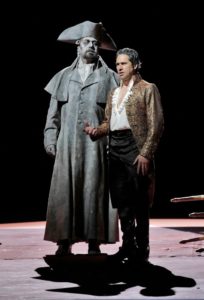 |
| Andrea Silvestrelli as the Commendatore and Ildebrando D’Arcangelo as Don Giovanni. Photo: Cory Weaver / San Francisco Opera |
One of the most powerful of all opera experiences for me is Don Giovanni. The opera is, as many of my regular readers may note, something of a favorite; it is also, to return to my first question, one of the more misunderstood works in the operatic repertoire. Some productions I’ve seen I have outright despised; others I found entertaining (like Komische Oper’s zany, Herbert Fritsch-directed production), while yet others made me re-think the opera entirely, illuminating its female characters and challenging perceptions of its main character. So much of what I think powers Mozart’s great opera is, in fact, the attitudes we, as audiences, bring into the auditorium; like any great work of art, our own experiences (and social conditioning) color what we experience, but when it comes to Giovanni especially, these attitudes show themselves in some very revealing ways, expressed mainly as our reactions to Donna Anna, Donna Elvira, Zerlina, and of course, to the Don himself.
Lately Don Giovanni has been frequently produced, what with the remount of Robert Carsen’s celebrated 2011 production on La Scala with baritone Thomas Hampson (one of the noted interpreters of the role) and bass baritone Luca Pisaroni (whose performance as Leporello I so enjoyed in Salzburg last summer); Opera in Holland Park and Opera Lausanne also celebrated their respective openings over the weekend, Gran Teatre Liceu (Barcelona) has a production opening later this month, and Festival d’Aix-en-Provence has a production next month. Don Giovanni is on now through June 30th at San Francisco Opera as part of their Summer of Love program.What is it about this work that so continues to entrance and excite artists and audiences alike? Why does the story of an unrepentant Lothario and the various women he loves and men he angers (and murders) — all within the space of one day — continue to have a grip on popular imagination? How does the work (and its telling) change through time, and why?
When I heard director Jacopo Spirei was helming a remount of a 2011 San Francisco Opera production originally directed by fellow Italian Gabriele Lavia, I was immediately intrigued. Spirei has an impressive resume of directing work, mainly focused in Europe and the UK; he got his start working with Graham Vick, and I’ve been following his career closely the last little while. Having already directed the opera two times prior to this (including at Salzburg’s renowned Landestheater), Spirei comes by his theatrical approach honestly. He spent considerable time in his twenties in England, seeing a variety of dramatic and operatic works at the English National Opera, the Royal Shakespeare Company, and the National Theatre. Eventually he went on to work with Vick at the celebrated Glyndebourne Festival. Spirei has since directed works at the Wexford Festival in Ireland, the Royal Danish Opera, Houston Grand Opera, the Theater an der Wien (Vienna), and Teatro Comunale di Bologna, among many others. Later this year he’ll be directing the opera Falstaff (based on Shakespeare’s The Merry Wives of Windsor as well as scenes from Henry IV, parts 1 and 2) at the famous Festival Verdi in Parma, Italy.
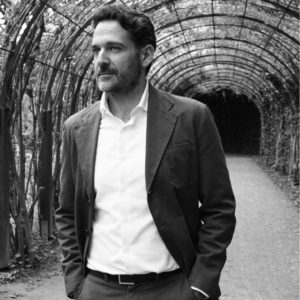 |
| Director Jacopo Spirei. Photo: Mary Marshania |
In making his debut with the San Francisco Opera, Spirei had to take the work of another director, in a production from six years ago, and make it his own. In addition to wondering what that must’ve been like, I was also curious to learn his thoughts about various characters (especially the female ones) in the opera, and what it’s been like to work with artists who come with lots of prior experience in the role. Our conversation was very wide-ranging and, at times, quite intense, if equally friendly, and very lively. Spirei definitely has his opinions, but he has what I’d call the iron-hand-in-velvet-glove approach; he doesn’t hit you over the head with ideas or proclaim decrees, but rather, contextualizes artistic and musical history, with some fun contemporary corollaries, to make truly interesting suggestions. You don’t have to agree with what he says, of course, but it’s worth ruminating on, at the very least. As I wrote in a past feature, sometimes it’s nice to be presented with new ideas on something you thought you knew very well, even if, initially, it’s a bit uncomfortable.
Owing to the wide nature of our conversation, I’ve divided our chat into two sections; expect Part 2 soon. We discuss the role of so-called “tradition” in opera, bringing the art form out of the theater, and what he meant when he recently told Newsweek that “In Italy, (opera) is all about putting on a pretty picture.” For now, here’s Spirei on Don Giovanni.
What’s it like as a director to come to a production that already exists, and to try to put your own stamp on it?I’ve never done anything like this, but it’s been fascinating, to get, somehow, the limited set of ingredients and just create a new dish, because it’s a little bit of, when you have boundaries you are forced to be a lot more creative. Sometimes the boundaries are budget, artists, all kinds of different aspects, which is incredibly fascinating and exciting. This was the real challenge, to reinvent an element already there, although the starting point (of the original) is something that intrigued me a lot.
What was the element?
The fact the mirrors were central in the original production. I find it really attractive in a way, how Giovanni is a mirror to the other characters, showing us their real sides, taking everything from them. Somehow we’ve stripped everything away, so it’s just the element and dynamic in which the characters interact with each other and Giovanni.
You’re working with people who have a lot of experience with this work, and this character.
It’s great; it’s luxury. People come with their own luggage of experience of contributions. We’ve been working in an incredibly organic way — with (conductor) Marc (Minkowski), with Ildebrando (D’Arcangelo, who sings the lead) it’s been a great time of sharing and experiencing new material and finding new angles.
What I enjoy about working with Ildebrando is that he’s an artist who comes with a lot of experience, and a lot of expertise and knowledge, but he’s completely willing to try out new things and put himself in your hands, to experiment. It’s been really exciting to have worked someone who has been so fun. We didn’t have to do all the preliminary work; we both know the material really well, so basically a glance of the eye is enough for both of us to understand which way we’re going. It’s something I’ve never experienced in my life; with a look, he understands what you’re thinking and you can communicate with him in the same way, and then steer his performance into different directions. I’ve enjoyed that immensely.
Marc is the same. I love his approach to the tempi; it’s very refreshing, (in that) it’s very new, very contemporary, especially coming from period music. He’s an expert in that, of course — Baroque and ancient music — but he brings that freshness that conductors who come from that repertoire have. This is really exciting.
In many ways Don Giovanni feels like it belongs in the 21st century; it has so much to say about humans and relationships.
Absolutely. I’ve done Giovanni three times, in three completely different settings, time-wise, period-wise, visually as well. It’s extraordinary how much Giovanni has to give. You never get to the bottom of it. One could work on this opera forever and never get tired, though you might become obsessed, and be haunted by it! It’s a phenomenal piece to study, and like every Mozart piece, it never ceases to make us understand ourselves and the times in which we live. Giovanni is the man who is not willing to pay a price for his actions, who is completely free and without boundaries, with no morals, who pushes forward and never looks back.
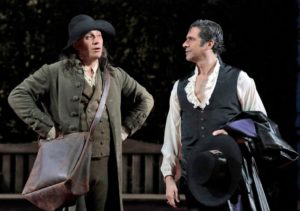 |
| Erwin Schrott as Leporello and Ildebrando D’Arcangelo as Don Giovanni. Photo: Cory Weaver / San Francisco Opera |
What you’re saying makes me wonder, is he a symbol more than an actual man?
Yes of course, absolutely.
I’ve spoken with others who insist he is, and has to be, the latter.
Not at all! The thing is, that, if anything he is an example. What he is, is not Casanova, who is an historical figure; he’s a legend, a legendary character, and in a way, he has gone through five centuries of theater and has transformed himself every time because every century has looked at this character through their own lenses. The 18th century viewed him as a man who gets punished because he doesn’t take responsibility for his actions and follows instincts; it’s not a positive example.
The 19th century adored the element of him being against everything — but “Viva la libertà” is not a hail to freedom, it’s a hail to liberty, to do whatever you want. That’s not an altogether positive value, it’s the freedom to do whatever you like, however it pleases you, no matter what consequences it has on other people, which is the boundary of freedom. As you say, my liberty finishes when yours begins; Giovanni has none of (the awareness of consequences), so of course we’re fascinated and attracted, like we’re attracted to an abyss, or a tornado.
I feel like the women really define him in many ways in this opera; they’re all incredibly important.
In the story, that day in the life of Giovanni, he doesn’t even seduce anybody! The only woman who’s in love with him is one who was abandoned from another place and is chasing him. We know he has a lot of women only by the words of Leporello about the catalogue, which is a list he makes as he says, but… is it a collection? Are those numbers real? The great thing about Giovanni is deceit; he’s constantly deceiving us as much as he’s deceiving everyone else. With Anna of course, there are lots of different approaches to that (situation), but it starts with the rape…
… if you want to call it that; some directors think it’s questionable if that’s what it actually is; I’ve come to think it is, too.
It is questionable, but once you go through the music and what she says, and the dramatic tension of the music, the trauma is there. Had she not shouted, her father would have not turned up — her father (the Commendatore) would be alive; if she shut up and didn’t do anything and let Giovanni go ahead and do whatever he was doing, her father would still be alive. She does carry that guilt, no matter how conscientious or not-conscientious she is. That’s one element. Another is that Zerlina is seduced by the money; she says “yes!” the minute he tells her, “I have a villa and will marry you.”
You can’t forget positions in this opera; he is called “Don” for a reason, after all.
Absolutely.
I get frustrated with stagings that forget that part, and ones in which the women are victimized.
What’s fascinating is the characters also change. Elvira is a victim of Leporello and the catalogue aria, and we laugh at her until she tells us, “My God, he has betrayed me with so many women” and all of a sudden, we are with her in that pain. It’s the same moment when we find out our partners had betrayed and cheated on us. It’s so incredibly raw and so close to ourselves. One cannot simplify it into victims and non-victims; each one is a character representing an element of our personality.
… while also being a real human being: complex and nuanced.
Absolutely.
___
Here’s Part Two of our chat, in which we discuss the role of theater in a broader sense, the debate on tradition in opera presentation, and opera fashion (To dress up or not to dress up?). Enjoy!

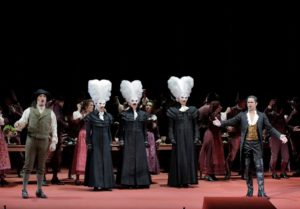


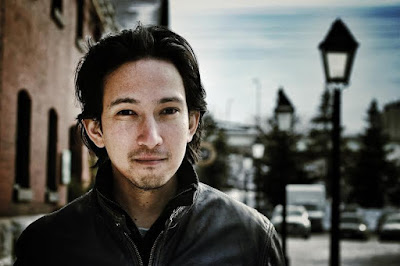





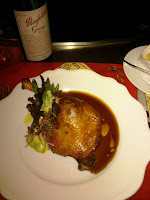
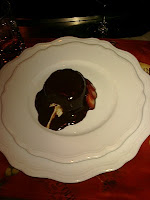


Essay: “She Had A Choice”
By Catherine Kustanczy
On August 13, 2019
In classical, music, opera, personal
Today’s news about Placido Domingo was shocking to some and not to others. I spent much of the day pouring over various reactions, curious to take the temperature of the online classical world. What was and is most striking throughout various forums I read has been the divisive nature of the comments, sharply moving between “finally” and “bunch of lying opportunists.” Addressing this in writing offers a rumination on something I’ve not commented on very much publicly. I’m not one to shriek about anything on social media (those who know me know I do that enough in-person over anything I feel strongly about), but with news of one of the most famous living opera figures being accused of sexual harassment, the time feels nigh, and so.
I met Placido Domingo as a wide-eyed child who was pulled out of school to attend a record store one blustery Toronto afternoon. My mother smiled graciously when it came to be our turn. I only later understood the looks exchanged between the tenor and my starstruck (if very beautiful) mother. He told me to “study hard” and off we went. Years later my mother and I would watch Three Tenors concerts now and again, and after her passing, I got to see Domingo myself, in a concert version of Thais at the Salzburg Festival, and later in Macbeth at LA Opera. In any business the reality of transaction is part of overall functionality; scratch my back, I scratch yours. Within the arts world there exists, with equal if not greater presence, a spirit of what I’d call relationality, where the bonds of positive relationships power much of what is experienced within a live performance, in opera or in concert. Those relationships are, quite often, sacred things, creating webs-within-webs of connectivity between artists, administrators, musicians, designers, directors, managers, dramaturgs, répétiteurs, and the many, many others who help to make classical things happen. Transactionality, and more vitally, relationality, create a frequent blurring between art and life, a blur which often manifests itself in some of the most magical and unexpected ways, but within that world, there are barriers people (professionals, that is) know not to cross. Others – those in positions of power – step over the lines without a second thought; they know they can. Power affirms a feeling of impunity, entitles poor behaviour, highlights narcissism. When your norm is applause and adoration, you don’t care about blurring lines, because the rules don’t apply. This, of course, is where abuse happens.
Photo: mine. Please do not reproduce without permission. (Collection Bode-Museum, Berlin)
Those who’ve been shrieking about opportunistic ingenues tend to point directly at Instagram as evidence of their claims, and while one might suspect any number of young artists would happily go to some effort to meet such powerful (and obviously useful) men, in this age of carefully curated selfies and meticulously groomed feeds, yes, sex sells, and always has; the classical world is not immune. (In working on a story about Instagram and opera last year, one friend commented that the platform has become “one giant competition to see which ingenue can pout the hardest –never mind the singing.”) It could be reasonably said that young women in the arts are more empowered than ever when it comes to presenting the image they wish the world to see; there are others who claim they’ve experienced instances of ingenues coming on to those in power (directors, conductors, major leads). I would argue such instances are perfect examples of women feeling they need to play into a male-gaze game for professional advancement. But, you may say, isn’t that how the world works? My question is, why should it have to be in 2019?
In my own younger days, I was agog at any attention from men whose work I enjoyed; they were indeed gods to me. (One of Domingo’s accusers speaks of him in similar terms.) Yes, it’s dangerous to put people on pedestals, but it happens with predictable regularity in the arts world, and it can be hard to see our heroes as fallible beings who are capable of screw-ups, let-downs, and generally terrible behaviour. When I was the receiving end of some flirtation by a famous man in my 20s, I remember being flattered, stunned, bewildered (“he’s paying attention to little old me?!“) – it was a sort of high I didn’t want to come down from. I did not possess the maturity or self-confidence to be able to discern whether or not such attentions were appropriate or sincere; I only knew it was exciting, addictive, and good at quelling the blizzard of negative inner voices, all of them crying for validation. If such validation happened to be coming from the object of worship… what better thing? I felt I was getting ahead; I felt, as a twenty-something stuck in a series of dead-end jobs, I was finally progressing. I felt the true me was being heard, seen, accepted, celebrated. Of course, it wasn’t the “true me” at all that was being recognized but the part handy to the powerful man. I gave away a version of myself, quickly and freely, in exchange for the validation I thought I needed, the feeling of advancement conflated with acceptance and affection with equal determination.
Photo: mine. Please do not reproduce without permission. (Collection Altes Museum, Berlin)
It’s tough when the only arena in which you might hope to experience intimacy (or its fantasy-laden pastiche) is a transactional one. Some powerful men will, quite purposefully, sing a siren’s song to one’s doubting inner voices, a song that promises success, wholeness, joy, that says “I can give you all this…“. Attention, flirtation, the promise of success: narcotics for a young woman with a shaky sense of both herself and her worth. It’s hard to say “no” to all of that. It’s hard to say “no” to someone you idolize, who is powerful, who says he’ll help you, who convinces you that he thinks you’re talented and sexy and brilliant. It’s hard to say “no” to the attentions of a powerful man when you, as a young woman in a far less advantageous position, feel you need those attentions, and you need to accept them to climb the ladder of success. You don’t recognize you’re being groomed because you don’t have the tools for that, much less to refuse and walk away. And even if you do recognize the predatory nature of the attention, what “choice” do you actually have? Would it be right to call it “consent”?
The use of that word has been widespread in today’s online discussions. I take particular issue with its misuse because it begs the question: from which environment — mental, emotional, intellectual, societal — does that consent arise? From which vantage point? From whose history? From which influences? A woman’s history with that word, and its power in her life (to say nothing of the culture in which she was raised), may have taught her to think of it in ways that are the precise opposite of its true meaning and lived application, thus leading to a deep internalization of patriarchal notions of power – who holds it, why, how. So I ask again: whose consent? In what spirit was such consent made and given? Was it even a conscious decision, made with the full faculties of reason, rationality, maturity, and experience? “Consent is consent!” some may argue, “Stop twisting things!”
Photo: mine. Please do not reproduce without permission. (Collectiion Bode-Museum, Berlin)
But the situation itself is twisted, because current ideas of who holds power and why have been internalized to the point of a total blindness that does not and literally cannot allow for empathy (which extends to much of the current political discourse as well). The perception of what true consent actually is, in and of one’s self, is (and was) a ridiculously complicated (though it shouldn’t be) matter when one is starting out in a notoriously difficult industry which, in itself, is adverse to change and evolution. A woman may be “consenting” because she feels there’s no other path. She may be “consenting” because she truly believes this is just how things are done, and have been done, in the industry. She may “consent” because she was raised in a culture that says men are always horny, always the boss, and always have more power than you. She may be “consenting” because the idea of courting rejection from someone she idolizes is too painful to bear, her sense of self being so closely tied up and twisted with the person she’s presented – and it may well be career suicide to say “no.” From what I’ve read today there are a number of people who simply don’t comprehend the vast power of someone like Placido Domingo – though there are just as many who do; there isn’t real “choice” in dealing with someone who has sat so high, for so long, on the throne of his own classical kingdom. Failure to recognize this constitutes the worst form of ignorance, willful or not. The exercise of choice within such a context is illusory at best. A powerful man can sometimes be very clear about the sex-in-exchange-for-opportunities thing, and so a young woman’s choice (so-called) between offering sexual favors to ascend professionally, and not having any professional opportunities at all, is hardly a climate in which any human should be expected to operate. It certainly isn’t one in which the notions of choice and consent can be freely exercised.
Photo: mine. Please do not reproduce without permission. (Collection Bode-Museum, Berlin)
I want to believe that human evolution is moving far past a place where sexual transactionality within the classical industry is perceived as normal and fine and even (good grief) empowering for women. I believe serious damage – creative, emotional, spiritual – is being wrought through the perpetuation of a casting-couch culture, a damage only felt decades down the line, as women face the fallout of their perceived choices, ones made for reasons wholly unconnected with true advancement. New worlds are opening up as more people feel emboldened to come forwards and say: I don’t accept this as our system. This is not the key we should play in; this is not the aria we should continue to sing. This tempo stinks; let’s rewrite the whole thing together.
It takes a lot, to risk saying this in public, much less living it –to risk being perceived as a flake, a golddigger, a finger-wagger, an apologist, a malicious figure of angry embitterment. One must continually acknowledge that we operate within a system that’s been set up with the most strict and narrow conventions (of race, sex, opportunity), but we love the classical arts enough to push for change. It is a risk, and a reward, to be truly heard, seen, recognized, accepted for who one is, without the thousand masks we wield on a daily basis to please our respective audiences. To the ladies who spoke up: thank you, and encore.